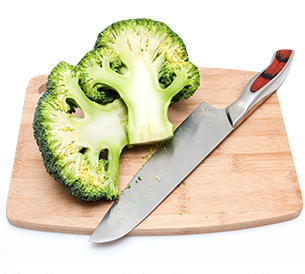Finding the Best Buy on Food
Finding the best deal on food is a skill, and one anyone can learn. All it takes is knowing what to look for and where to find it. Learn how to find out the best deal for you and your family.
The first step in becoming a smart shopper begins with the price tag. Each price tag that appears on the front edge of the grocery shelf shows a lot of helpful information including the size of the item, the retail price, and the unit price.

Retail Price is the price you pay for each item.
Unit Price is used to compare the price of the same unit (pound, ounce, quart, etc.) between two items. Look for the lowest price per unit. You can use the unit price to compare different brands and sizes of the same brand to figure out which one costs less.
You can use the unit price to compare different brands and different sizes of the same brand to figure out which one is less expensive.
Additional tips to become a smart shopper
Understanding the price tag is one of the tools you can use to becoming a smart shopper. Here are some additional tools to use:
Buy in bulk. It is almost always cheaper to buy foods in bulk. Smart choices are family packs of chicken, steak, or fish and larger bags of potatoes and frozen vegetables. Grains, such as brown rice, millet, barley and oats, are all available in bulk, as are beans, lentils, some nuts and dried fruit. Buy fresh, low-fat milk, yogurt, and cheese in the largest size that can be used before spoiling. Larger containers often cost less per unit than smaller sizes.
Before you shop, remember to check if you have enough freezer space. Buy large bags of frozen vegetables and seal tightly in the freezer between uses. Canned or frozen fruits or vegetables can be bought in large quantities when they are on sale, since they last much longer.
Buy in-season. Fruits and vegetables that are in season are typically cheaper, fresher, and more nutritious. If you buy too much, freeze the rest or incorporate it into future meal plans. Farmer’s Markets always carry what is in season. When you can’t buy in season, buy frozen fruits and vegetables. Frozen produce is just as nutritious and can be purchased anytime of the year.
Stay away from convenience foods. Convenience foods like frozen dinners, frozen vegetables with added sauces or butter, pre-cut vegetables, pre-bagged salad mixes, flavored rice, oatmeal, or grits will cost you more. The better buy is to prepare your own. Buy vegetables and fruits in their simplest form. Pre-cut, pre-washed, ready-to-eat, and processed foods are convenient, but often cost much more than when purchased in their basic forms.
Stock up during sales. When favorite products or staples are on sale, stock up to save money. Make sure the products won’t expire before you have time to use them. It won’t save you money if you end up throwing it out later.

